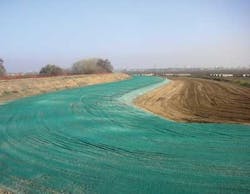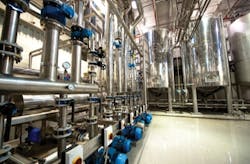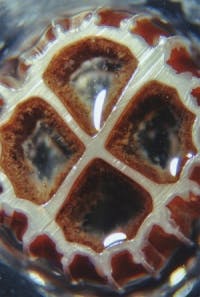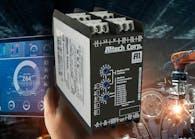By John Mickler and Ajit Ghorpade
A common challenge for breweries is meeting current wastewater discharge standards while accommodating growth and anticipating future, more stringent regulatory requirements. Moving Bed Biofilm Reactor (MBBR) technology has helped Puerto Rico’s Cervacera Brewery meet this challenge.
A desire to export its award-winning beer prompted Compañía Cervecera de Puerto Rico (Cervecera) to carry out an aggressive and ambitious expansion and modernization program, and last year’s Central American and Caribbean Games could not have provided a better stage for the family-owned brewery to showcase its new modern facility.
Cervecera was founded in 1937 and is located in the City of Mayagüez, Puerto Rico, on the island’s western coast. Its main products are its pale lager, Medalla Light, a recipient of numerous international awards, and Malta India, a popular malt beverage.
Mayagüez is a popular tourist destination and was deemed an excellent choice to host the 2010 Central American and Caribbean Games. The multi-sport regional championships, held every four years, are the oldest continuing regional games in the world. Cervecera management realized its city would be receiving a tremendous number of visitors – including more than 5,000 athletes representing 31 countries and several hundred thousand spectators.
With a number of the athletic events scheduled to be held at venues adjacent to the brewery, Cervecera’s goal was to complete all updates and expansion projects prior to the game’s July 17 commencement ceremony – the perfect opportunity for the company to showcase its new world-class facility and visitors center.
Under the leadership of Camalia Valdés, Cervecera’s President since 2002, the family-owned company has ushered in a new mindset for the brewery. Valdés has guided Cervecera through the significant modernization of its infrastructure. With its premier product, Medalla Light, gaining greater prestige, the time was right for the company to expand its operations and begin exporting.
The newly completed $100 million expansion and modernization project has equipped Cervecera with new brewing equipment and the latest in German brewing and packaging technology, including a new Cold Block and Packaging Plant designed and engineered from end to end for the company in order to maximize quality, efficiency and production. Updates also included brew house and boiler plant automation, and vertical fermentation.
Effluent Treatment
Expanding production by 60 percent required Cervecera to upgrade and expand its wastewater treatment facility. A common challenge for breweries is meeting current wastewater discharge standards while accommodating growth and anticipating more stringent discharge regulations in the future. For many breweries, there often exists a trade-off between costs expended versus costs saved for wastewater treatment. If properly designed and engineered, and with careful technology selection, treatment plant upgrades and process modifications can often bring significant efficiencies.
Cervecera’s wastewater treatment system had been in operation for a long time, but years of service and increased hydraulic and organic loadings had made it difficult to meet treatment objectives. Controls were mostly manual, there were no instrumentation monitoring parameters, and operation of the system’s return activated sludge (RAS) was inconsistent, which often resulted in difficulty dewatering the waste activated sludge (WAS). In addition, operation of the treatment system’s rotating biological contactors had become a very high maintenance issue, and power requirements for the treatment plant were high, due to the continued operation of old, highly inefficient recirculation pumps.
Odors generated at the treatment plant had also become a potential issue. Cervecera has always strived to be a good neighbor among local residents. Also, with major international sporting events soon to be taking place essentially next door, it was important that spectators and athletes, as well as visitors to the brewery, not be bothered by nuisance odors from the treatment plant.
Treatment System Selection
For Cervecera, it was obvious that the long-term solution required a wastewater treatment plant upgrade and expansion. After reviewing a number of proposals and following the results of an on-site pilot study, the brewery determined that a system upgrade that included the addition of AnoxKaldnes™ Moving Bed Biofilm Reactor (MBBR) technology followed by dissolved air flotation (DAF) was the most effective solution.
The MBBR technology is a treatment process based on biofilm principles. The process uses plastic media toBy ultimately selecting a design that incorporated the plant’s existing tankage, rather than starting from the ground up with an all-new system, Cervecera was able to reduce capital costs for the upgrade significantly.
A great advantage of MBBR technology is that it can be installed in existing tanks. Cervecera’s existing biological reactor tank was determined to be structurally and operationally sound and adequate for the conversion. After the rotating contactors were removed and a few modifications were made to the large rectangular tank, Cervecera gained an expanded and highly efficient wastewater system without expanding the footprint of the original treatment plant.
System Overview
The MBBR is comprised of a tank, AnoxKaldnes™ plastic media, a sieve to drain the treated water and keep the media in the tank, and a medium bubble aeration grid consisting of stainless steel laterals and diffusers.
This type of wastewater treatment technology operates as a fixed-film process without activated sludge. It is a self-contained biological treatment system that does not require media backwashing. Free-floating plastic cylindrical carriers are kept in the tank to provide a place for bacteria growth. Aeration is supplied to the tank to provide the necessary oxygen for microbial growth and sufficient agitation to fully disperse the plastic carriers throughout the tank. The agitation also serves to control the biofilm thickness on the plastic media. As the biomass becomes too thick and heavy to hold onto the media, it is sloughed off, suspended and drained from the reactor with the treated water to be captured in the DAF downstream of the MBBR.
The Cervecera wastewater treatment plant had used a settling method that had become a source of sludge collection and disposal issues. That system was replaced with a new DAF system that separates and optimizes solids prior to dewatering. As the flow leaves the MBBR, it moves through a mixing pipe flocculator for injection of coagulants and flocculants, to increase particle size, and whitewater (a mixture comprised of DAF effluent which has been saturated with air). The fluid mixture enters the DAF across the length of the system.
Water velocity is significantly reduced inside the DAF, maximizing the separation potential. Microbubbles attached to particle surface area cause the solids to float to the surface where they are automatically skimmed from the surface into a top cone. The solids settle into the cones, which are emptied by automated time controls. The “clean” liquid is constantly removed at several points inside the vessel.
Additional plant upgrades include variable frequency drives for automated speed control of blowers based on dissolved oxygen (DO) levels that are continuously monitored by a DO sensor installed in the biological reactor tank. Achieving and maintaining optimum DO levels involves strategic use of the blowers. The ability to automatically speed up, slow down or even turn off the blowers based on real-time DO measurements provides greater control over the process, allowing the plant to conserve energy and save money while optimizing system performance.
With regard to the treatment plant’s odor issue, process control is now the key. Before the upgrade, the rotating contractor basin was overloaded and had numerous “dead zones” that generated odors. With the MBBR system, there are no dead zones plus biological treatment is much quicker and more efficient, thereby eliminating problems with odors.
About The Authors: John Mickler, P.E., PMP, is Project Manager, and Ajit Ghorpade, PhD, is Technical Director, Biological Processes, for N.A. Water Systems, a Veolia Water Solutions & Technologies company.




